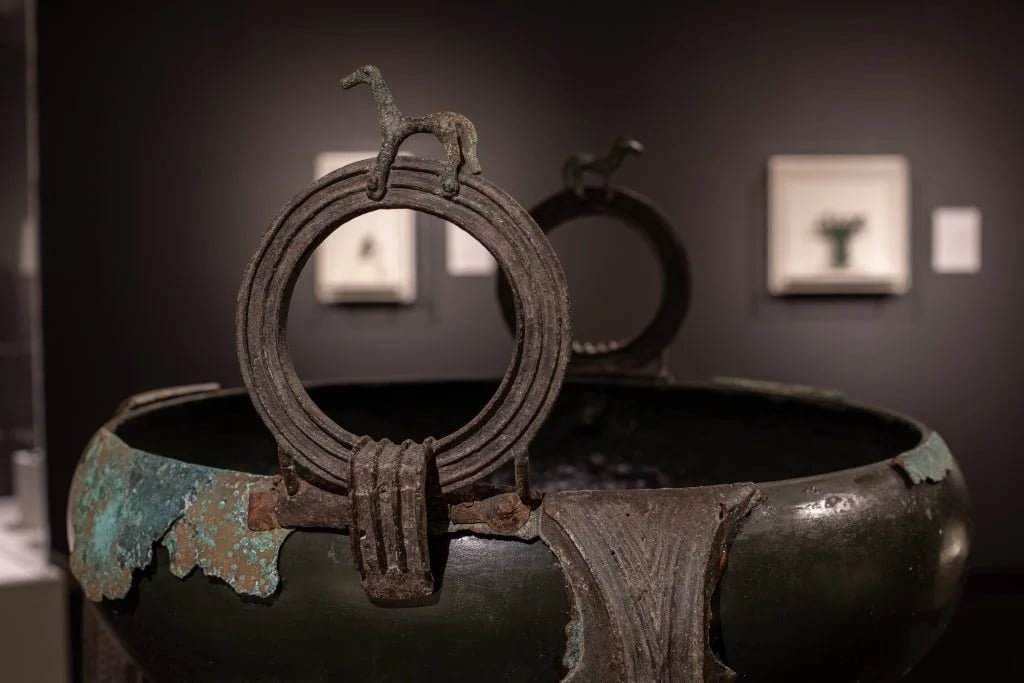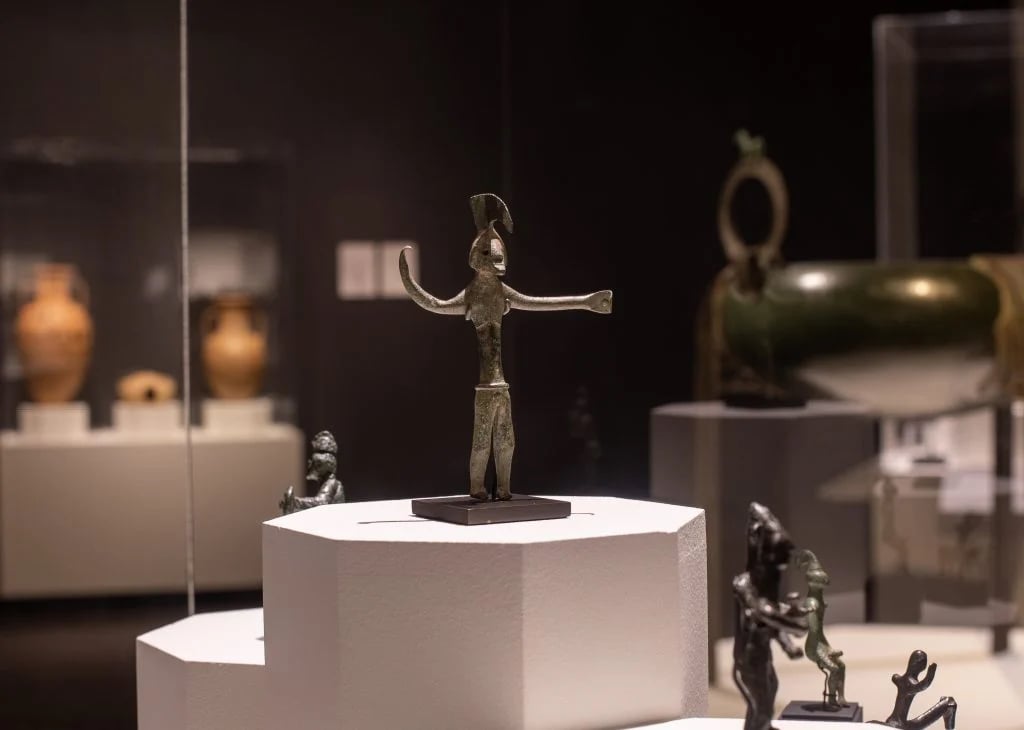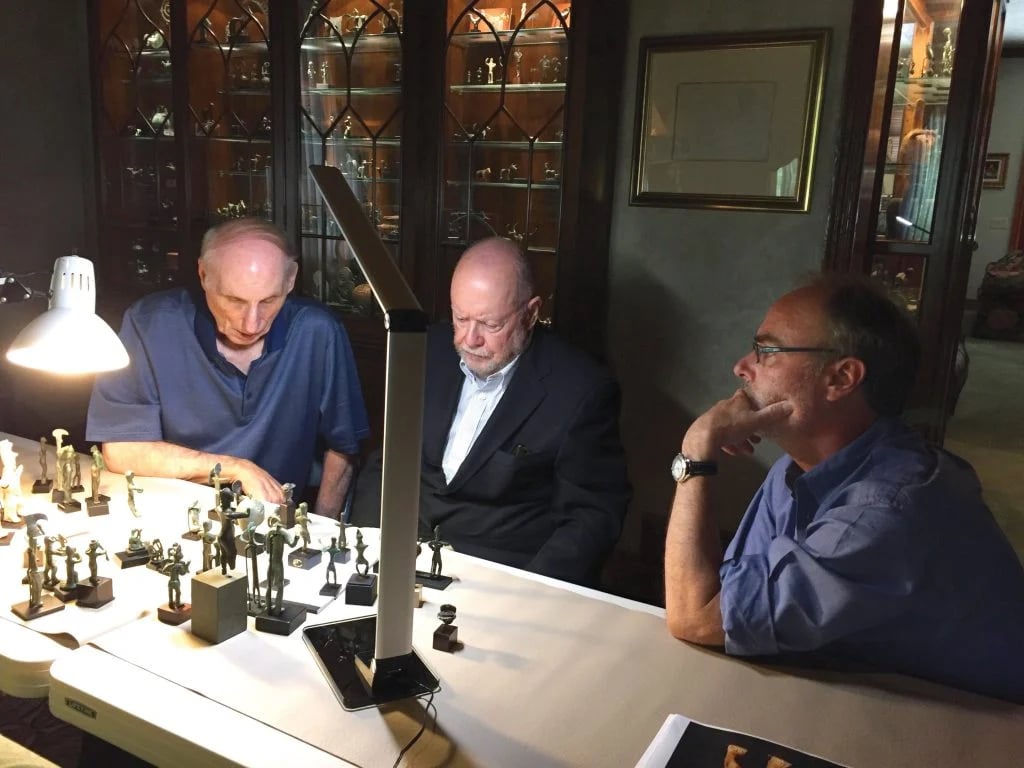Museums & Institutions
A Florida Museum Has Fired a Senior Curator for Organizing a Show of Possibly Looted Greek Antiquities
The Denver Art Museum canceled plans to host the show.

The Denver Art Museum canceled plans to host the show.

Sarah Cascone

A curator is out of a job at Florida’s Museum of Fine Arts, St. Petersburg after concerns were raised about the provenance of Greek antiquities he included in a high-profile exhibition.
The show, “From Chaos to Order: Greek Geometric Art from the Sol Rabin Collection,” was set to travel to the Denver Art Museum, but the latter canceled plans to host it as a provenance controversy grew.
Initially, the Denver museum suggested postponing the exhibition to give more time to investigate the provenance of the works. But after two months, the Museum of Fine Arts put its curator, Michael Bennett, on leave, and then fired him a month later. How the role of potentially illicit origins of works in the show played in the decision to terminate the curator remain unclear.
Bennett, who was senior curator of early Western art, told the New York Times that the museum never explained its reasoning for his termination. The museum’s lawyer told Bennett’s counsel in a letter obtained by the Times that his employment was at-will, but “if cause were required to terminate Dr. Bennett’s employment, MFA would have more than sufficient grounds to do so, as Dr. Bennett well knows.”

“From Chaos to Order: Greek Geometric Art from the Sol Rabin Collection” at the Museum of Fine Arts, St. Petersburg, Florida. Photo courtesy of the Museum of Fine Arts, St. Petersburg, Florida.
As of press time, the institution had not responded to inquiries from Artnet News.
Bennett’s show featured works on loan from Sol Rabin, the chair of the ancient art committee at the Harvard Art Museums. He had spent the past few decades building up his holdings of some 700 Greek sculptures under the guidance of Bennett and the late Harvard archaeologist David Mitten. It is by all accounts an impressive collection—and one that Bennett believed could help art historians look at the development of Greek art through the lens of geometry.

Sol Rabin, Harvard classical art and archaeology professor emeritus David Gordon Mitten, and Museum of Fine Arts curator Michael Bennett. Photo courtesy of the Sol Rabin Collection and the Museum of Fine Arts, St. Petersburg, Florida.
“Geometric art was a foundational breakthrough—the ‘Big Bang’ that set in motion what would follow,” Bennett told Daily Art Magazine during the exhibition’s initial run.
Only three of the 57 works in the show, which date from about 900 to 700 B.C.E., had ever been publicly exhibited before, adding to the show’s appeal.
Under the UNESCO 1970 Convention, antiquities have to have left their country of origin before 1970, or have documentation of their legal export. These guidelines for museums—and failures to adhere to them—have led to numerous high-profile seizures and restitutions.
Most of the works in Bennett’s show did not have provenance information proving their export from Greece prior to 1970, and some of them had been acquired through the late antiquities dealer Robert E. Hecht, who faced smuggling charges in Italy and is suspected by authorities of dealing extensively in stolen objects. (A report on potentially looted antiquities in museum collections published this year in International Consortium of Investigative Journalists identified Hecht as a likely source of them.)

Greek Zoster (warrior belt), 8th century B.C.E., a work from “From Chaos to Order: Greek Geometric Art from the Sol Rabin Collection” at the Museum of Fine Arts, St. Petersburg, Florida. Photo courtesy of the Sol Rabin Collection and the Museum of Fine Arts, St. Petersburg, Florida.
Before its planned journey out West, the show made stops at the Rollins Museum of Art in Winter Park, Florida, and the Gibbes Museum of Art in South Carolina. But at the last moment, the Denver Art Museum pulled out, citing concerns that the ancient artifacts might have been looted. (In 2021 the museum had to return a quartet of looted Cambodian sculptures linked to disgraced dealer Douglas Latchford.)
In decades past, many museums were known to turn an eye to provenance issues in order to acquire desirable antiquities, regardless of origin. But standards have become stricter in recent years, with increasing pressure on institutions to clean up their collections by restituting improperly sourced works.
Sol Rabin didn’t get full provenance details for all his acquisitions, he admitted to the Times, but he trusted Hecht. “I would look him in the eye. He would say, ‘No, these are fine. These are legitimate pieces,’ so I purchased them,” Rabin said. “There is absolutely no logic that because a dealer is claimed to be a red flag dealer that all things he sold are red flags.”